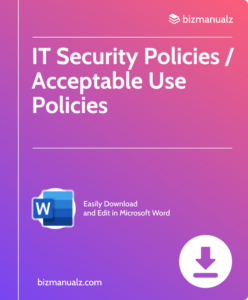CIO IT Security Protocols

Welcome to the world of cybersecurity, where the constantly evolving threat landscape can leave even the most seasoned IT professionals feeling overwhelmed and perplexed. With the increasing number of cyber attacks and data breaches, the need for robust IT security protocols has become more crucial than ever. In this article, you will discover practical strategies to protect your organization from cyber threats and safeguard your data. Are you ready to boost your organization’s security? CIO IT Security Protocols.
What Is a CIO?
A Chief Information Officer (CIO) is a high-level executive in charge of overseeing an organization’s information technology and computer systems. They are responsible for implementing and maintaining IT security protocols to protect data and ensure system integrity.
An impressive example of a CIO’s role in action is when they effectively prevented a cyber attack by quickly identifying a security breach, implementing strong security measures, and educating staff on cybersecurity best practices, thereby safeguarding the company’s sensitive information.
What Are the Responsibilities of a CIO?
The duties of a CIO include:
- overseeing the IT infrastructure of the organization
- ensuring the security of data
- implementing effective IT strategies
- aligning IT with the business’s goals
In 1981, William M. Daley became the first person to hold the position of CIO in the United States, paving the way for the role in government.
Why Is IT Security Important for CIOs?
Why Is IT Security Important for CIOs? IT security is imperative for CIOs as they strive to protect company data, maintain customer trust, adhere to regulations, and avoid financial losses or legal consequences.
What Are the Key IT Security Protocols for CIOs?
As the Chief Information Officer (CIO) of a company, ensuring the security of your organization’s IT systems and data is a top priority. To achieve this, there are key IT security protocols that every CIO should be familiar with.
In this section, we will discuss these protocols and their importance in maintaining a secure IT environment. From conducting risk assessments to implementing incident response plans, each protocol plays a crucial role in protecting your company’s assets. Let’s dive into the details of these essential IT security protocols.
1. Risk Assessment and Management
Risk assessment and management are vital components for CIOs in ensuring IT security. Here are the necessary steps:
- Identify and evaluate potential risks to the organization’s IT infrastructure and data.
- Measure the potential impact of these risks on the organization’s operations and reputation.
- Create a comprehensive risk management plan to mitigate and address identified risks.
- Continuously review and update the risk assessment and management strategy to adapt to emerging threats and vulnerabilities.
Pro-tip: Collaborate with cross-functional teams to ensure a holistic approach to risk assessment and management.
2. Network Security
- Implement firewalls to monitor and control incoming and outgoing network traffic for enhanced network security.
- Regularly update and patch network devices and software to address vulnerabilities and improve network security.
- Utilize intrusion detection and prevention systems to identify and respond to potential network threats and strengthen network security.
- Enforce strong authentication measures for network access, including robust password policies and multi-factor authentication, to ensure network security.
- Establish secure virtual private network (VPN) connections for remote access to the network, adding an extra layer of network security.
3. Data Encryption
- Understand the data: Identify sensitive information that requires encryption, such as customer data, financial records, or intellectual property.
- Select encryption method: Choose strong encryption algorithms like AES or RSA to protect data at rest and in transit.
- Implement encryption tools: Utilize encryption software or hardware to secure data, ensuring only authorized parties can access it.
- Manage encryption keys: Establish robust key management practices to safeguard encryption keys and prevent unauthorized access to encrypted data.
- Regularly update encryption protocols: Stay current with data encryption standards and update encryption methods as technology evolves.
4. Access Control and Identity Management
- Implement Role-Based Access Control (RBAC) to assign permissions based on job roles and responsibilities.
- Utilize Multi-Factor Authentication (MFA) to strengthen user authentication and prevent unauthorized access.
- Deploy Single Sign-On (SSO) to simplify user access across multiple systems while maintaining security.
- Enforce strict password policies, including regular password updates and complexity requirements, as part of Access Control and Identity Management.
- Regularly review and update user access privileges to align with organizational changes and security needs.
5. Incident Response Plan
- Preparation: Establish an incident response team and plan, including communication protocols.
- Identification: Detect and classify the incident, assessing its impact and scope.
- Containment: Isolate the affected systems while preserving evidence for analysis.
- Eradication: Remove the cause of the incident and restore affected systems.
- Recovery: Resume normal operations and implement measures to prevent future recurrences.
In 2013, retail giant Target suffered a massive data breach due to a lack of a robust incident response plan, resulting in the compromise of over 40 million credit and debit card accounts.
How Can CIOs Ensure Compliance with IT Security Protocols?
As the role of Chief Information Officer (CIO) becomes increasingly crucial for businesses, ensuring compliance with IT security protocols is a top priority. In this section, we will discuss the various measures that CIOs can take to ensure compliance and protect their organization’s sensitive information.
From regular audits and employee training to strong password policies and monitoring systems, each of these sub-sections will provide valuable insights on how CIOs can effectively safeguard their company’s data.
1. Regular Audits and Assessments
- Regular audits and assessments are crucial for evaluating the effectiveness of IT security protocols.
- Conduct thorough evaluations of current security measures and identify any potential vulnerabilities.
- Ensure compliance with industry standards and regulations through regular audits.
- Implement continuous monitoring systems to detect and address any emerging security threats.
- Review and update security protocols based on the results of regular assessments and audits.
2. Employee Training and Education
- Create a comprehensive employee training program that covers the best practices and procedures for IT security.
- Conduct regular workshops and seminars to educate employees on emerging cybersecurity threats and how to address them.
- Offer interactive e-learning courses to ensure that employees are continuously learning and staying aware of IT security protocols.
- Simulate phishing attacks and other security breaches to effectively train employees on how to respond in such situations.
3. Implementing Strong Password Policies
- Enforce complex passwords: Require a minimum length, special characters, and a mix of upper and lower case letters to implement strong password policies.
- Implement multi-factor authentication: Add an extra layer of security by combining passwords with another form of authentication, like a code sent to a mobile device, to further strengthen password protection.
- Regular password updates: Encourage or enforce the periodic changing of passwords to minimize the risk of unauthorized access and maintain strong password policies.
- Educate users: Provide training on creating and safeguarding strong passwords to enhance overall security awareness and promote the implementation of strong password policies.
4. Monitoring and Updating Security Systems
- Regular Monitoring: CIOs should establish a schedule for consistent monitoring of security systems to detect any anomalies or potential threats.
- System Updates: Implement a strategy for timely updates to security systems in order to address vulnerabilities and ensure optimal protection.
What Are the Consequences of Not Following IT Security Protocols?
As a Chief Information Officer (CIO), ensuring the security of your organization’s IT systems is of utmost importance. But what happens when IT security protocols are not followed? In this section, we’ll discuss the potential consequences that can arise from neglecting IT security measures.
From data breaches and financial losses to damage to reputation and trust, the repercussions can be severe. Let’s take a closer look at each of these consequences and understand the importance of following IT security protocols.
1. Data Breaches and Loss of Sensitive Information
- Regularly update security systems to mitigate the risk of data breaches and protect against the loss of sensitive information.
- Implement strong data encryption methods to safeguard sensitive data from unauthorized access.
- Enforce strict access control and identity management protocols to prevent unauthorized individuals from obtaining sensitive information.
- Develop and regularly test an incident response plan to effectively address and minimize the impact of data breaches.
2. Financial Losses
- Lawsuits and legal fees resulting from data breaches can result in financial losses.
- Compensation for affected individuals and regulatory fines can also cause significant financial losses.
- In addition to these expenses, recovery costs such as system repairs and damage control can contribute to financial losses.
3. Damage to Reputation and Trust
- Communication: Transparently address any breaches or incidents to maintain trust.
- Accountability: Take responsibility for security lapses and outline corrective measures.
- Consistency: Implement and uphold robust security policies and procedures.
To mitigate damage to reputation and trust, CIOs should prioritize proactive security measures and swift, honest communication in the event of security incidents.
Frequently Asked Questions

What is the role of a CIO in IT security protocols?
A CIO, or Chief Information Officer, is responsible for overseeing all technological aspects of a company, including the implementation and maintenance of IT security protocols. They work closely with IT teams to ensure that the organization’s data and systems are secure from potential threats.
What are some common IT security protocols used by CIOs?
Some common IT security protocols used by CIOs include firewalls, intrusion detection and prevention systems, data encryption, and multi-factor authentication. These protocols help protect against unauthorized access, data breaches, and other cyber threats.
Why is it important for a CIO to stay updated on IT security protocols?
The landscape of cyber threats is constantly evolving, making it crucial for CIOs to stay updated on the latest IT security protocols. By staying informed, they can ensure that their organization’s data and systems are protected against emerging threats.
How can a CIO ensure that employees are following IT security protocols?
CIOs can implement regular training and awareness programs to educate employees on IT security protocols and their importance. They can also monitor network activity and enforce strict policies and procedures to ensure compliance.
What are some challenges that CIOs face in implementing IT security protocols?
Some challenges that CIOs face in implementing IT security protocols include budget constraints, lack of support from upper management, and difficulty integrating new protocols with existing systems. It is important for CIOs to have a solid plan and support from all levels of the organization to overcome these challenges.
How can a CIO measure the effectiveness of IT security protocols?
CIOs can measure the effectiveness of IT security protocols by conducting regular risk assessments, monitoring network traffic, and analyzing incident reports. They can also track key metrics, such as the number of successful cyber attacks or the time it takes to detect and respond to a threat.
















Leave a Reply